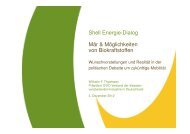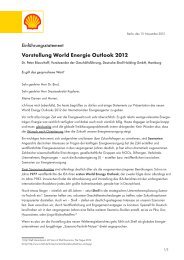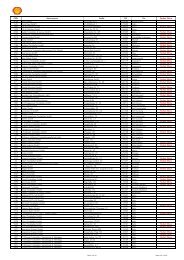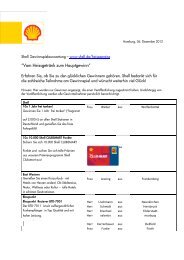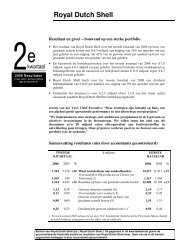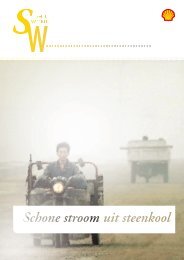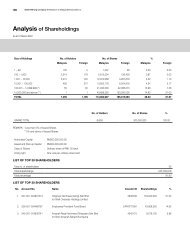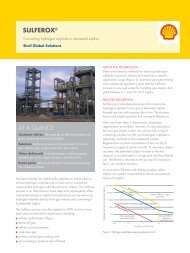ENVIRONMENTAL STATEMENT BARDOLINO DEVELOPMENT
ENVIRONMENTAL STATEMENT BARDOLINO DEVELOPMENT
ENVIRONMENTAL STATEMENT BARDOLINO DEVELOPMENT
You also want an ePaper? Increase the reach of your titles
YUMPU automatically turns print PDFs into web optimized ePapers that Google loves.
Bardolino Development Environmental Statement<br />
6.2 THE PHYSICAL PRESENCE OF THE DRILLING RIG AND SUPPORT<br />
VESSELS (INCLUDING ANCHORING OF THE DRILLING RIG)<br />
6.2.1 Likely magnitude and duration<br />
Shell proposes to drill the Bardolino development well with Transocean’s semi-submersible<br />
drilling rig, the Arctic IV. The presence of the semi-submersible rig and support vessels<br />
during the drilling operations might result in some interference with commercial fishing or<br />
shipping in the area adjacent to the Bardolino location. A temporary safety exclusion zone<br />
with a radius of 500m centred on the semi-submersible drilling rig would be established for<br />
the duration of drilling operations, a period of 3 months. This would exclude commercial and<br />
fishing vessels from an area of approximately 0.8 km 2 .<br />
The semi-submersible drilling rig would be positioned over the drilling location with the aid of<br />
the three AHTVs, and would maintain its station by eight anchors in a pre-determined ‘anchor<br />
pattern’. In such a system, the anchors are attached to the drilling rig with a chain and cable<br />
combination; for each anchor line approximately 300m of chain would be in contact with the<br />
seabed, providing additional holding power. The use of anchors to position and moor the<br />
semi-submersible drilling rig would result in the physical disturbance of seabed sediments and<br />
benthic fauna in localised areas around the anchors (chains and wires) during deployment<br />
and retrieval.<br />
Depending on the nature of the seabed, anchors can create mounds up to 1 m high, and<br />
anchor chains lying on, and sweeping over, the sediments can create gouges and scour<br />
marks. Anchor mounds can form on clayey sediments, and because of the stiffness of clay<br />
they have the potential to become long-lived seabed features that may represent obstructions<br />
to mobile fishing gear deployed on the seabed. The anchoring conditions survey undertaken<br />
for the Bardolino well location indicated that seabed sediments comprise a veneer of sand<br />
with outcrops of clay (Gardline Geosurvey Limited, 2007). The shallow soils comprise soft<br />
to firm slightly sandy clay with occasional gravel, ranging from 25 m thickness in the west to<br />
being locally absent in the east (Gardline Geosurvey Limited, 2007). It is possible that<br />
persistent anchor mounds would be created on this type of sandy clay sediment.<br />
6.2.2 Impact on sensitive receptors and proposed or designated sites<br />
The presence of the semi-submersible drilling rig at the Bardolino location would result in a<br />
temporary loss of access to fishing grounds and a temporary inconvenience to commercial<br />
shipping in the area. The overall relative value of fisheries in the Bardolino development area<br />
is classified as “very low” to “low” for ICES rectangles 44F1 and 43F1 (SEERAD, 2008b)<br />
(Section 4.5.1). The relative fishing effort for demersal species, pelagic species, Nephrops<br />
and shrimp and shellfish is “very low” (SEERAD, 2008b). Demersal pair and otter trawling<br />
has dominated fishing effort in the Bardolino area between 2002 and 2006, with fishing<br />
activity occurring throughout the year (Section 4.5.1). The potential disturbance to<br />
commercial fishing from the drilling programme would be of a small-scale and would be very<br />
unlikely to impact on the economic value of the overall fishing activity in this area. The timing<br />
and nature of operations would be notified to other users of the sea and a dedicated guard<br />
vessel would be on location at Bardolino to ensure that all traffic was aware of the presence<br />
of the drilling rig.<br />
The distribution and abundance of benthic organisms in the North Sea is determined largely<br />
by latitude, water depth and sediment type. Results from biological surveys carried out in the<br />
general vicinity of the Bardolino development show that the infauna is typically dominated by<br />
polychaete worms, while epibenthic species include the shrimp Crangon allmanni and the<br />
hermit crab Anapagurus laevis (Section 4.4.2). The macrofaunal communities of the<br />
proposed development area are largely homogenous and typical of sandy sediments in the<br />
central North Sea. No sensitive, rare or threatened benthic communities are known to exist in<br />
the vicinity of Bardolino.<br />
Anchor mounds and scours have the potential to cause disruption to benthic communities.<br />
The deployment and retrieval of anchors from the semi-submersible drilling rig would cause<br />
Page 6-2 April 2008


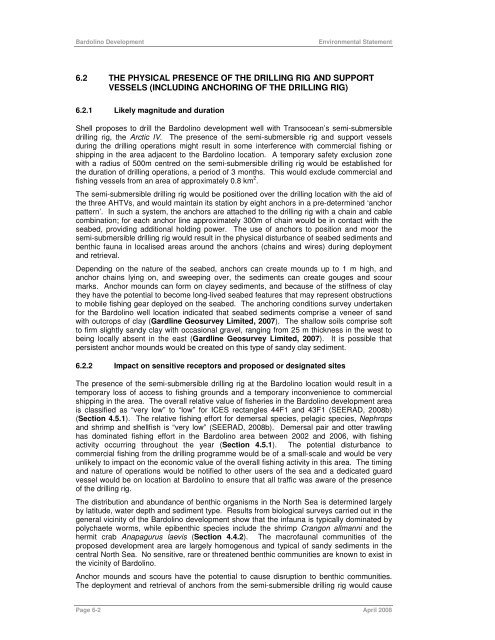

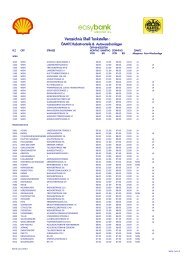
![Download Shell AutoGas Stationen [Stand: Januar 2013] (PDF](https://img.yumpu.com/9982753/1/190x245/download-shell-autogas-stationen-stand-januar-2013-pdf.jpg?quality=85)
